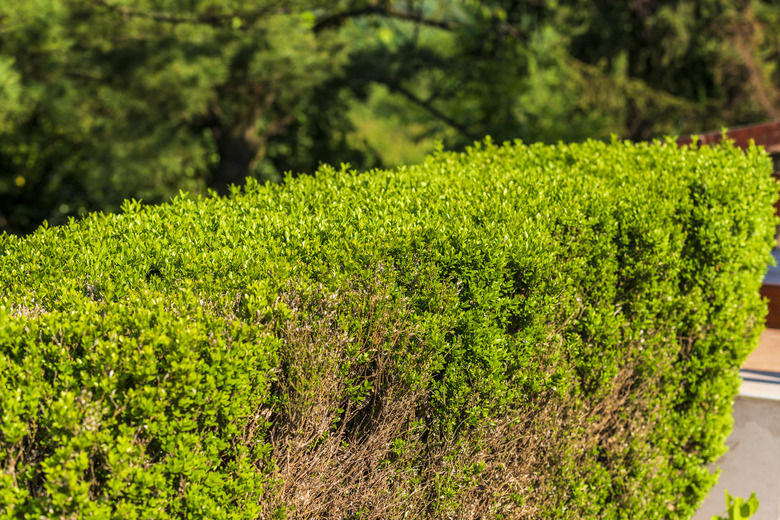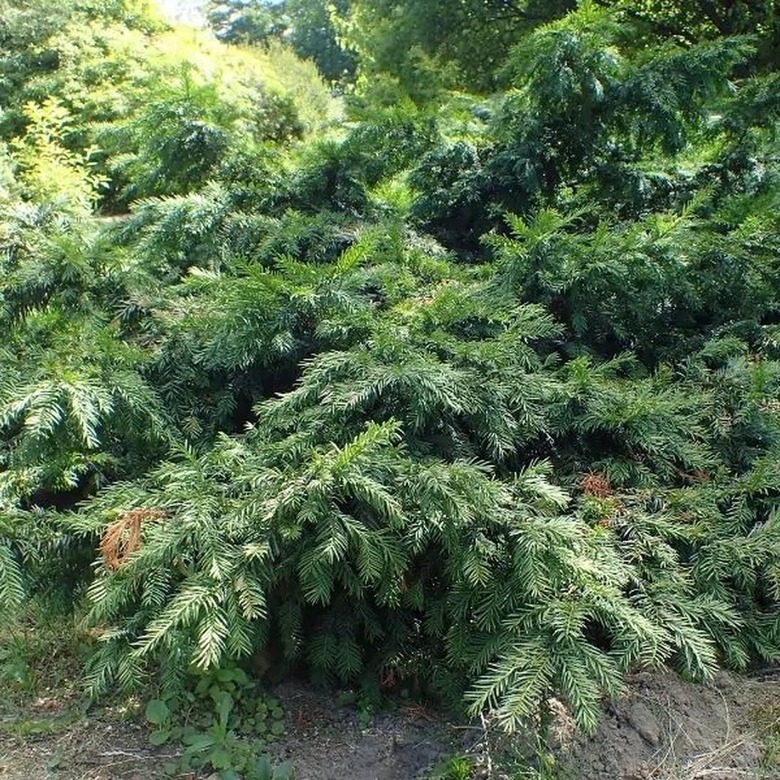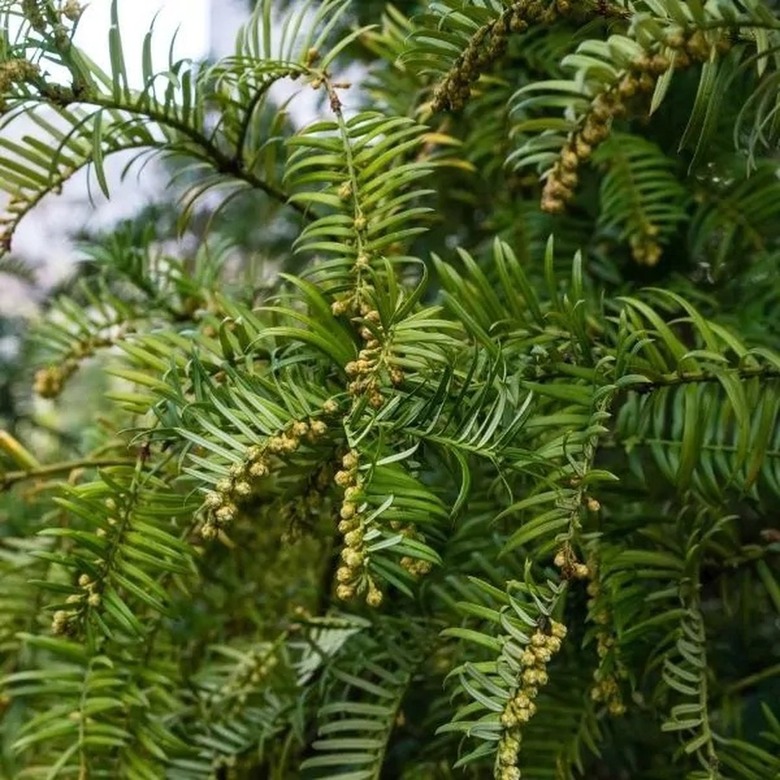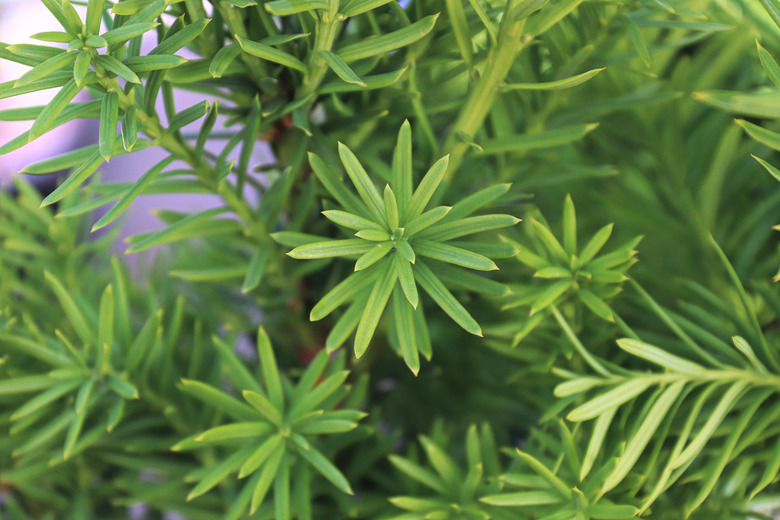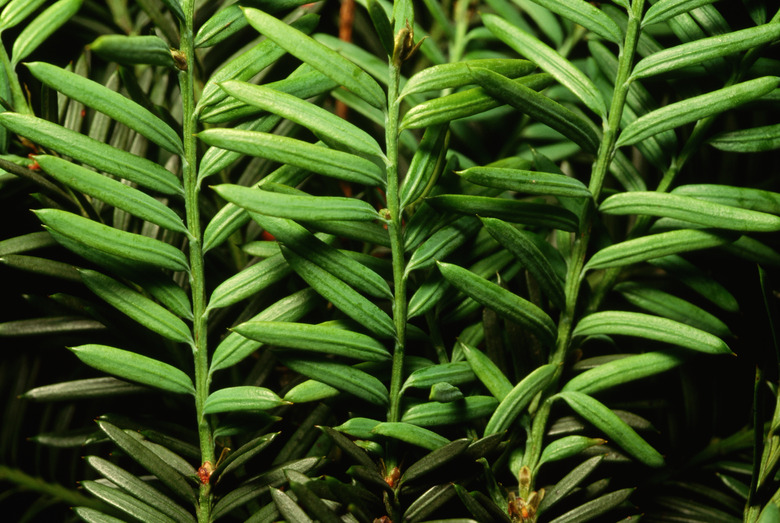Types Of Yew Shrubs That Can Green Up Your Garden All Year
Yew shrubs grace landscapes from Alaska to Virginia with their flat dark green needles and red berries. Their varying shapes make them useful landscape plants. Low-lying shrubs serve as ground covers while uprights provide shade and privacy screening. yews serve ornamental and decorative purposes. Three yew species used primarily for landscapes are Japanese yew (Taxus cuspidata, USDA zones 4-7), English yew (Cephalotaxus harringtonia, zones 6-9), and hybrids between the two. Less cultivated yews, like the Canada yew (Taxus canadensis, zones 3-7) and Pacific yew (Taxus brevifolia, zones 5-9) are indigenous to North America.
English Yew
English Yew
English yew is not as cold hardy as Japanese yew but the Repandens cultivar can withstand USDA hardiness zone 5. Repandens, an English yew hybrid likes to spread out and can reach heights of 4 feet. Fastigiata is a narrow growing erect cultivar. Some low-lying English yews such as Watnong Gold differ not only in growth but foliage color as well. This ground-cover produces yellow foliage.
Japanese Yew
Japanese Yew
Japanese yews are capable of withstanding colder temperatures than English yew cultivars. The Emerald Spreader cultivar is a thick, dark green ground cover capable of withstanding temperatures of 40 degrees below zero. Green Wave, another cultivar, is named for its dark green color and arching branches. With a mounding growth habit, Green Wave reaches heights of 4 feet and widths of 8 feet. Tall, upright Japanese yew cultivars include the cone-shaped 50-foot tall Capitata.
Hybrids
Hybrids
Japanese and English yew hybrids exhibit the best traits of both species – hardiness combined with ornamental qualities, withstanding zone 4 climates and covering landscapes with wide, spreading dark green shrubbery. Brownii (Taxus x media 'Brownii,' zones 4-7) is a globe-shaped cultivar and Hatfieldii (Taxus x media 'Hatfieldii,' zones 4-7) is a dense, cone-shaped bush well-suited for privacy screens.
Other Species
Other Species
Pacific yews grow along the length of North America's west coast – from California's southernmost coastline to northern Alaska. Their evergreen habit and narrow leaves make them adapted to both cold and warm climates. They are a slow-growing upright tree not usually found in residential landscapes.
Canada yew is an eastern North American yew species found growing from northern Canada into Tennessee and Virginia and as far west as Illinois. Canada yew is a multi-stemmed slow growing shrub suited for residential landscapes.
References
Growing Yew
A favorite of container gardeners, yew shrubs grow best in areas noted for their shade while avoiding full sun. They thrive in rich, well-draining soil, but don't do well in heavy, clay-based soils. Prine yew in summer or early Autumn to avoid overgrowth. Once roots are established, yew will spread out and provide you with foliage for years to come.
